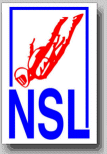
National
Skydiving
League
226 Pecan Street
Deland FL 32724
tel: (386) 801-0804
© 2003 - 2025
All Rights Reserved


226 Pecan Street
Deland FL 32724
tel: (386) 801-0804
© 2003 - 2025
All Rights Reserved


Last weekend, CASL Director and judge Dan Winkelstein launched the CASL outdoor season with the first competition at Carolina Sky Sports, and six Rookie Class teams attended the meet. This is the highest number of Rookie Class teams attending the same meet in the 11-year history of the National Skydiving League.

Carolina Windfall (Tamara Blue - Center Outside, Dani Bridges - Point, Julie Habermann - Tail, Kathy Stringer - Center Inside, Quincy Kennedy - Camera) won the competition in Round 4 after a 3-round race with Carolina Groove, a new Rookie class lineup. Windfall was already introduced by the NSL News with the story on 3 April 2008.

Two teams competed in the AA Class competition and completed six rounds, while the Rookie Class teams have only four rounds on their meet schedule.
The NSL News will follow up with more CASL information later. In the meantime, John Hart of Team Fastrax provides more 4-way tips in a series of articles that helps new teams and competitors to learn more about 4-way training and competition. This information can be very useful, especially for the beginners in the sport.

Greetings Four-Way Junkies,
Below is a piece on goal setting. This may be the single most important thing you do as a team. I encourage you to contact me with any and all questions you may have regarding goal setting or 4-way in general.
John

Communication is the key, I can't emphasize this enough. Communication on the ground leads to good teamwork and communication in the air leads to fun, safe skydives.
There are many factors to consider when choosing teammates. Some are more important than others. Some factors that seem important on the surface really aren't others can make or break a team.
Consider this when setting goals or choosing teammates. Competition 4-way should be about the journey you take, the path you walk and the choices you make as a team. It is about building lasting friendships, total commitment and personal sacrifice A true team requires open and honest communication on a daily basis. Choose a path and walk it together versus each member going opposite directions. Never say anything deragatory about a fellow teammate without them being present. Most importantly support each other during your high points and your low points. These few things will save you a great deal of frustration and insure that your training remains positive and memorable.
The most important factor in choosing your teammates is that everybody has common goals. If everyone has a clearly defined goal that they are committed to and working toward, your team will be able to deal with most obstacles that they will face. Common goals will bind your team together and keep the team on course.

A common goal for beginning teams is to have fun and learn. This is a very noble goal to have but it is too general to be very useful for a team. A more specific (and therefore more useful) goal is to learn the entire dive pool and have done all the formations at least twice by the end of the year.
Now, wanting to win 4-way Open at this year's Nationals is a very specific goal but it is not realistic for the majority of teams. If a team can only afford to do 50 jumps in a year then it is not an achievable goal. Be sure that your goals fit the means of what everybody is willing and capable of doing.
Beginning teams don't always have the knowledge and experience to know if a certain goal is realistic or not. Often their goals are either too high or too low. The danger of setting a goal that is too high is that frustration will set in. The danger of setting a goal that is too low is that you are limiting yourself unnecessarily. Working with an experienced coach can help in deciding on goals that are appropriate.
Goals can also be short term and long term. A goal that may be unachievable in the short term may be achievable in the long term. But in order to make it achievable, shorter term goals must be set. For example, the goal of winning the Nationals may not be achievable for somebody next year, but it may be achievable in 5 years. But in order to achieve it, you would set the goal of finishing in the top 20 next year and top 10 the year after that.
It is very important that everybody on your team all have the same short term goals. Somebody may eventually want to do big ways (long term goal) and not ever want to be a 4-way champion. Another person may want to be a 4-way world champion, but have no interest in big ways. But if both want to improve their flying skills by doing 4-way and agree on a goal of finishing in the top 10 in Intermediate 4-way at Nationals, then they can successfully be on a team together.
